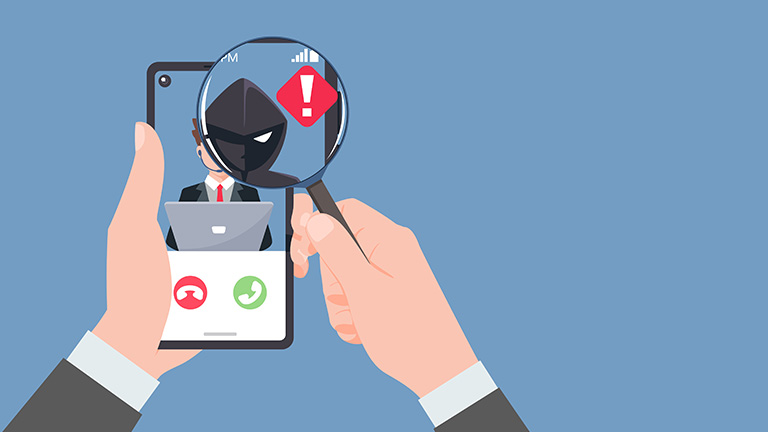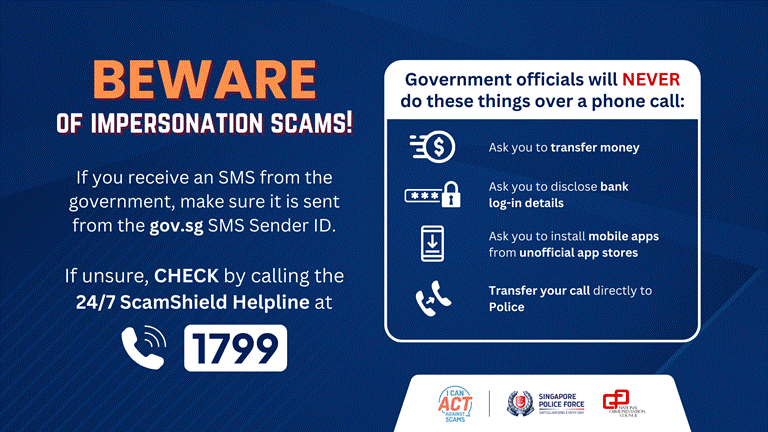How to Spot, Report & Prevent Scam Calls
Stay safe from scam calls in Singapore! Learn how to recognise and report them using the ScamShield app.
What’s the first thing that comes to mind when an unknown number pops up on your phone?
Chances are, you’d think: “scam call.”
You’re probably right. Such scams have only gotten bolder in recent years, with thousands of people falling prey to them annually. From sneaky “friends” who’ve just changed phone numbers to “helpful” bank representatives showing up out of the blue, here’s how we can better spot and report scam calls in Singapore.
📍Quick Navigation
In a hurry? Hop over to a specific section!
📈 Quick Stats on Scams in Singapore for 2025 (up next!)
📈 Quick Stats on Scams in Singapore for 2025
A handy snapshot of scam activity in Singapore for the year thus far.
- Over 9,500 total scam cases were reported in Singapore in the first quarter of 2025, with more than 36% of them (3,400+) occurring in March alone.
- More than S$224 million has already been lost to scams during this same three-month window.
- Impersonation scams remain widespread, with bank and government agencies frequently used as covers. Scams involving Chinese authorities or services (e.g. Tencent) have also recently surfaced—with over 265 cases reported in February 2025.
Note: These figures represent total reported scam cases in Singapore across all formats (calls, SMS, messaging apps, etc.) unless specified. Information courtesy of The Straits Times and the ScamShield website.
📞 What are Scam Calls?
Broadly, scam calls are just one of many types of fraud. Scammers pose as trusted figures to deceive victims, with the deception typically carried out over voice or video calls.
Common Types of Scam Calls in Singapore
As of end-March 2025, Singapore recorded over 9,500 scam cases, totalling more than S$224 million in losses. According to the Singapore Police Force (SPF), over 3,400 of those cases—around 36%—happened in March alone.
Although the website doesn’t specify how many of these cases were scam calls, what we do know is that they can come in many different forms. Here are how some of the more commonly reported scam call types operate:
- Government Impersonation Scams
Here, scammers pose as representatives of government agencies such as the SPF or the Inland Revenue Authority of Singapore (IRAS). These scams often involve emotional pressure or urgency to get victims to act quickly.
- Bank Impersonation Scams
Scammers impersonate bank representatives, claiming that there are urgent concerns with the victim’s account—such as potential fraud or suspicious activity. These calls often occur during business hours, sound professional, and may even include requests to “verify” sensitive details.
- Fake Friend Call Scams
In this type of scam, the scammer pretends to be a long-lost friend or one that has recently changed their phone number. By pretending to be someone the victim knows, the scammer aims to establish rapport, then ask for help with requests involving money or account details.
🚩 What are the Telltale Signs of a Scam Call?
Now that we know what they are, how can we better recognise scam calls?
Here are a list of red flags you’ll want to be wary of when there’s an unknown number on the other end of the line. If one or more of these are present, it may be a scam call.
Does the caller…
- Threaten to arrest you, or repeatedly urge you to perform a particular action as quickly as possible?
- Claim to be from a government agency or bank but also avoid providing verifiable contact information?
- Ask for sensitive information like your NRIC number, bank account details, OTPs, or SingPass credentials?
- Request money transfers to “secure” your account, “verify” your identity, or resolve supposed legal issues?
- Originate from an unfamiliar or international number – or from a local number that doesn't match official contact lines?
- Tell you not to hang up or speak to anyone else on the matter?
- Ask you to download an app or access suspicious links from non-official app stores or unfamiliar sources?
- Sound overly scripted, robotic, or inconsistent?
- Appeal to you using emotions like fear, guilt, or sympathy?
- Claim to involve the police in an attempt to scare or pressure you?
👮 How to Report Scam Calls in Singapore
Saw a suspicious caller and declined the call right away? That’s already a smart first step. Unfortunately, because this threat is constantly evolving, there’s no foolproof way to block every scam attempt. Yet, there are various tools and safeguards you can use to reduce the risk of encountering one—and, if need be, to protect those around you too.
1. Use the ScamShield App
A joint effort between the Ministry of Home Affairs, the SPF, Open Government Products, and the National Crime Prevention Council, the ScamShield app helps identify and block known scam numbers and SMSes. It automatically filters messages and calls from numbers linked to scams, based on regularly updated blacklists that users can also contribute to.
Users can also check whether incoming numbers and messages are legitimate using the app or consult the 24/7 ScamShield hotline at 1799 if they require further assistance.
2. Submit a Report via the SPF’s i-Witness Portal
If you’ve received a scam call or message, you can report it online through the SPF i-Witness portal to help law enforcement monitor scam trends and warn others.
However, if you believe you’ve been scammed, the best step forward is to file a Police Report. This can either be done online via the SPF’s e-Services portal or in person at your local Neighbourhood Police Post.
👉 SPF i-Witness Portal
👉 SPF e-Services Portal (if you need to file an official Police Report)
3. Enable International Call and SMS Blocking
Concerned about strange overseas calls or messages? Check in with your friendly telco (that’s us!) to activate International Call and SMS Blocking features on your devices. This free feature will automatically filter out unsolicited calls and messages from overseas numbers.
Even if you’re overseas, there’s no need to worry as the feature can easily be disabled (or re-enabled). Any Singapore-originating calls and SMSes will also come through as usual, so you won’t miss out legitimate contacts.
👉 Block Overseas Calls & SMSes with StarHub
🌟 Stay Scam-free with StarHub!
In a world where scam tactics are continuously evolving, vigilance is crucial to keeping us and our loved ones safe.
By being aware of the red flags and reporting suspicious activity, you can help protect not just yourself but our community at large. So, if something feels off about that call, it’s best to hang up, double check, and reach out to the official sources if needed!
Want to learn more about scams in general and how to thwart them? Make sure to check out our Scam Masterclass series, which we've worked on in collaboration with the Singapore Police Force!


 Back
Back



